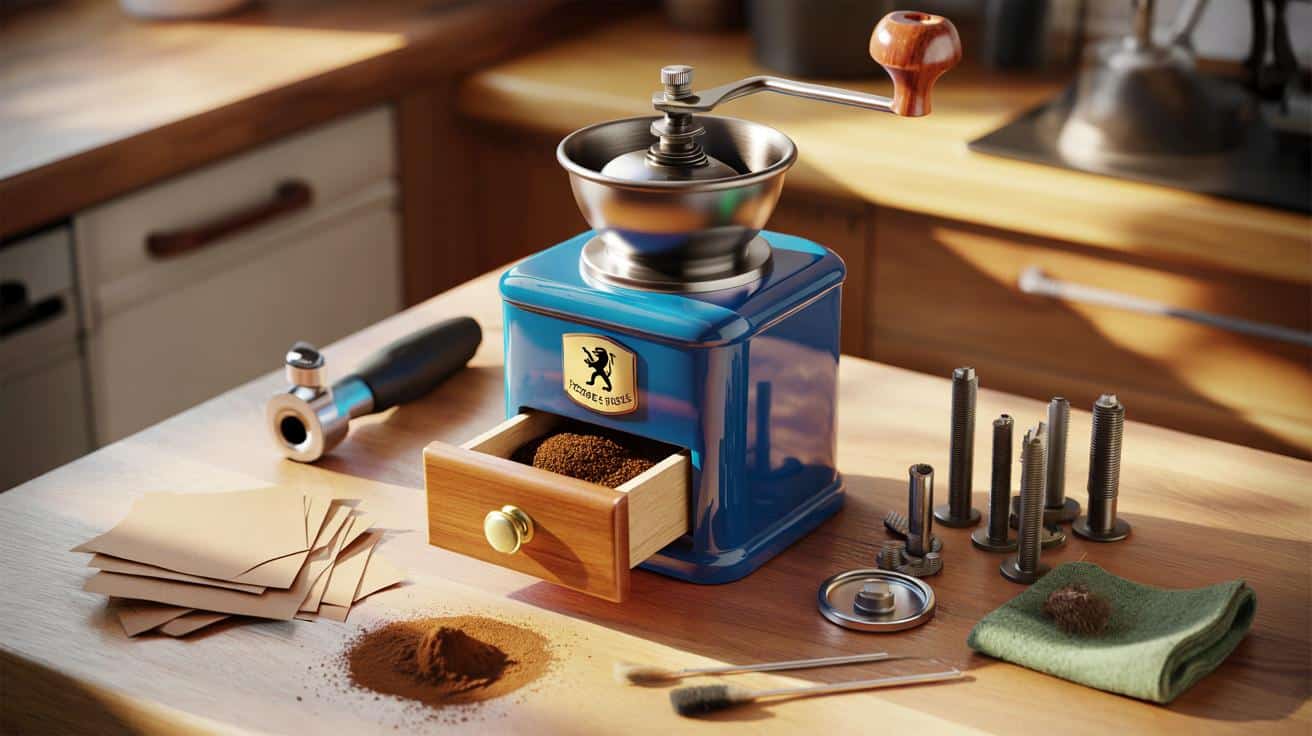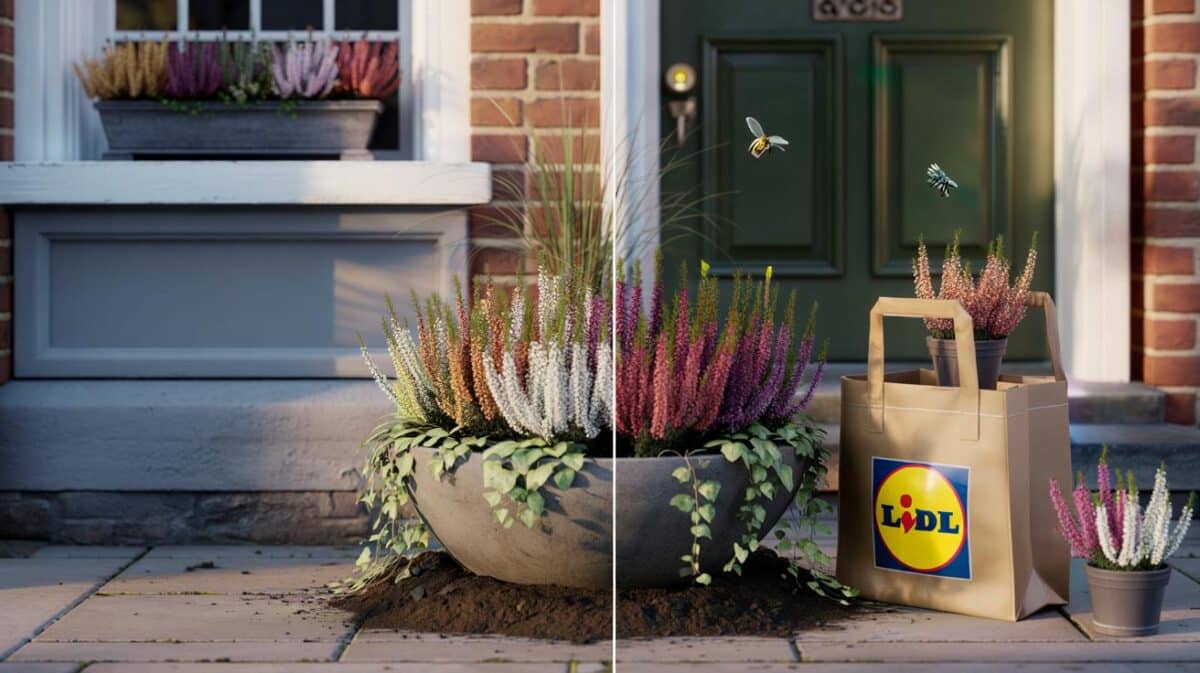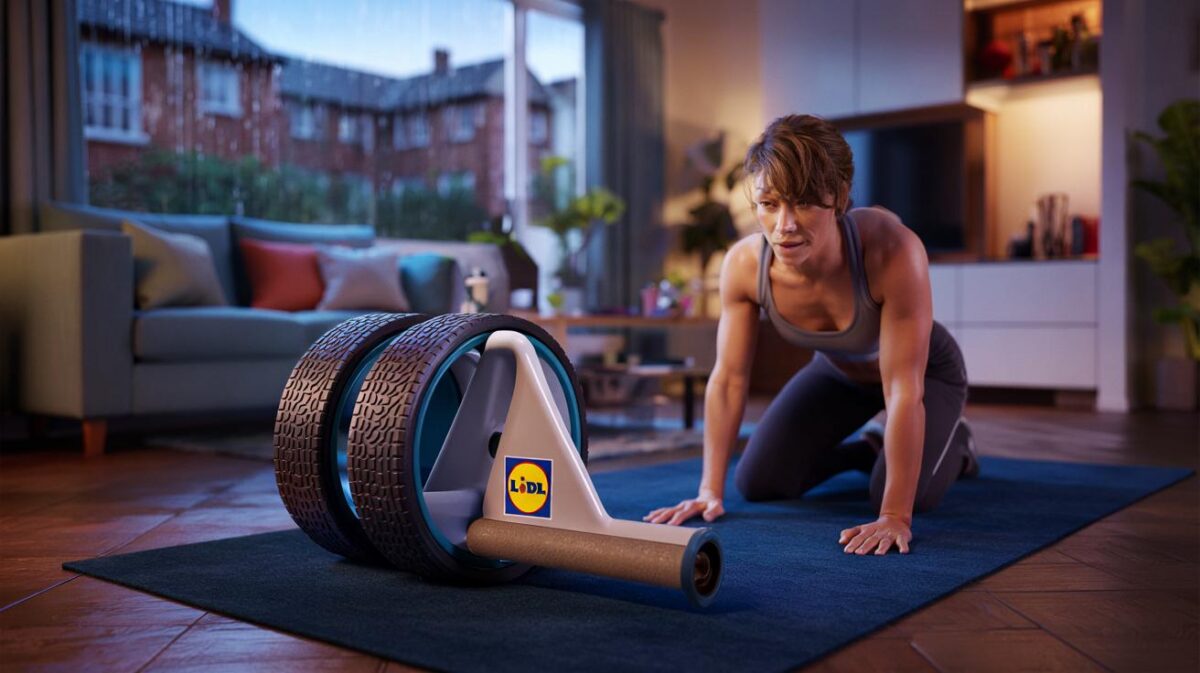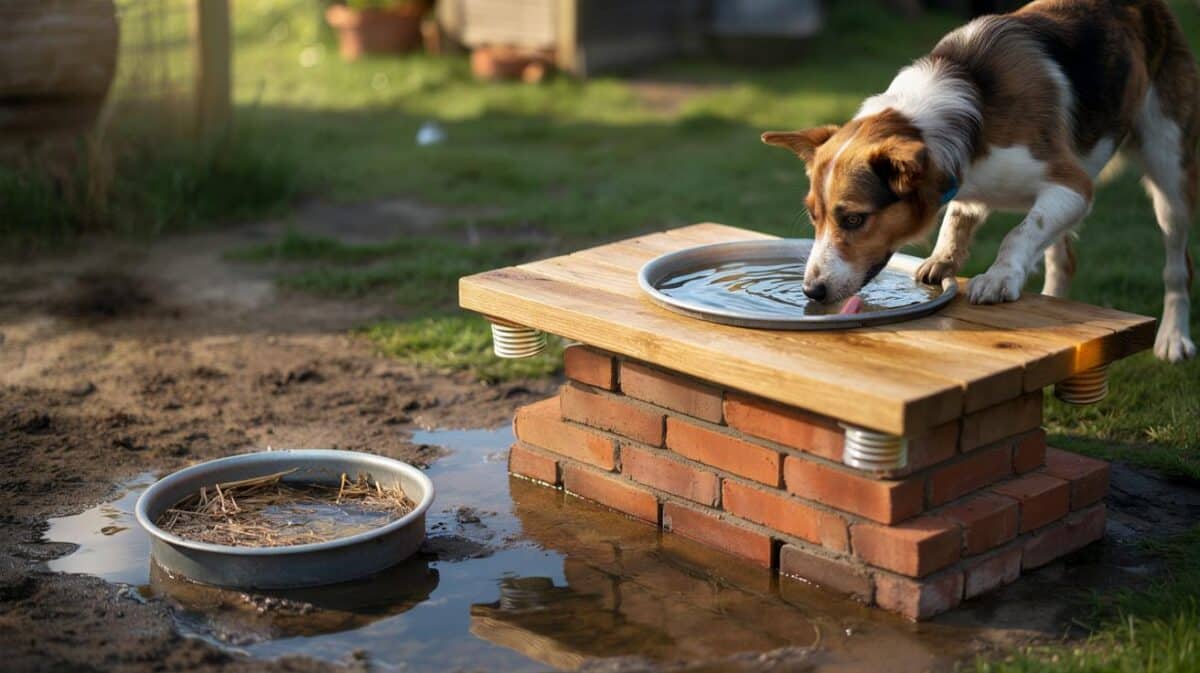This week, a seasoned restorer with more than thirty revivals to his name outlined a precise, food-safe way to bring a mid-century Peugeot coffee grinder back into daily use for around €25, undercutting replicas that reach €150.
Why vintage grinders are back on the workbench
Old hand-crank grinders keep turning up at car-boot sales and in family cupboards. Many look tired: chipped enamel, seized axles, rancid grease. Yet the core parts often remain sound. Rather than bin or replace, a workshop approach is gaining ground, favouring gentle products, low heat and reversible steps that respect age while restoring function for the kitchen.
The case study: an €8 Peugeot from the 1950s
A 1950s Peugeot Frères model bought for €8 set the tone. Its enamel was flaking and the mechanism was stuck. The restorer dismantled it in minutes, logged each stage with photos, then followed a careful sequence to clean, stabilise and refinish. The result kept its patina, met food-contact expectations and turned smoothly again.
€25 in materials, three days elapsed, about four hours of hands-on work, and a grinder that looks right and works safely.
The €25 toolkit you actually need
The shopping list stays short and inexpensive. Most items come from hardware shops. A low, even heat source and a natural grease-absorbing powder do the heavy lifting.
| Item | Purpose | Indicative cost |
|---|---|---|
| Sandpaper (grit 400 then 800) | Feather chipped enamel, smooth edges | €3 |
| Food-contact enamel paint (high-temp) | Seal and colour damaged zones | €8–€10 |
| Linseed oil | Free a stuck axle and revive sheen | €3–€4 |
| Food-grade silicone grease | Lubricate moving parts long-term | €3 |
| Terre de Sommières | Lift old grease without abrasion | €3 |
| Soft wire brush and microfibre cloths | Surface prep and finish | €3–€4 |
| Heat gun, set to 60 °C | Gentle thermal treatment | Already owned or borrowed |
Keep temperatures at 60 °C. Use only coatings certified for food contact. Patience beats force every time.
Step-by-step, adapted for a home kitchen
1. Dismantle and document
Allow 15 minutes to take the grinder apart. Photograph each stage so reassembly is stress-free. Separate metal, wood and enamelled pieces. Bag screws and keep the burrs aligned as they came out.
2. Draw out the grease
Dust terre de Sommières over greasy areas. Leave it to absorb for two hours. Brush off gently with a soft wire brush, then wipe with a dry microfibre cloth. This lifts rancid residues without biting into enamel or wood.
3. Local sanding only
Feather chipped or rusty spots with grit 400, staying tight to the defect. Smooth with grit 800 for a clean edge. Avoid stripping sound enamel; the character lives in those intact surfaces.
4. Warm, don’t scorch
Use a heat gun at 60 °C for around ten minutes per piece. The goal is to encourage moisture and stubborn grease to move, not to soften metal or warp plates. Keep the tool moving and measure with an infrared thermometer if you have one.
5. Paint in thin, patient coats
Apply food-contact enamel in two thin passes, four hours apart. Thin coats bond better and level more neatly. Leave the parts to cure for 24 hours before handling. For peace of mind, rub the area with a hot, damp cotton bud; no colour should lift.
6. Free and lubricate the mechanism
To release a seized axle, dab warm linseed oil with a fine brush. Let time and capillarity do the work. Once it turns, add a pea-sized amount of food-grade silicone grease to the moving interfaces. Wipe away any excess to keep grounds clean.
7. Finish and reassemble
Wipe enamel and wood with a microfibre cloth and a drop of linseed oil. Rebuild the grinder using your photos as a map. Check fasteners for snugness without overtightening. If you own a matching kettle or pot, run a cold-water leak test on its seals while you have the bench set up.
Timing, risks and results to expect
- Day 1: Dismantle, degrease with terre de Sommières, light sanding.
- Day 2: Thermal treatment, first coat, second coat four hours later.
- Day 3: Full 24-hour cure, test, lubricate, reassemble.
Expect roughly four hours of active work spread over three calendar days. Even grinders with wide enamel losses can present well, because the repair narrows visual breaks and stabilises edges. The same approach works for enamelled cookware, tins and even old fridges, provided you extend curing times to suit thickness and keep to food-contact coatings.
Avoid acids on enamel, skip hardware paints not rated for food, and never exceed 60 °C with heat treatment.
What it means for your wallet and your coffee
Buying a modern replica can set you back €150. Refitting an original for €25 not only saves cash; it preserves period materials and avoids waste. Once rebuilt, you can dial in grind by tightening the top nut until the burrs kiss, then backing off in small turns. Aim for even particles that match your method: coarser for French press, medium for filter, finer for moka.
Settings and simple diagnostics
- If the handle turns stiffly, add a tiny touch of silicone grease to the bushings.
- If grounds clump, check for residual oil and wipe the chute dry.
- If you hear scraping, back off the adjustment one eighth of a turn.
- For repeatable results, mark one face of the adjuster with a dot and count turns.
Food-contact assurances and sensible cautions
Coatings labelled for food contact remain the foundation of this method. Models restored this way have met practical kitchen use against current European expectations in 2025, according to the restorer. Even so, keep paint away from sliding burr interfaces, use thin coats, and test freshly cured areas before grinding coffee you’ll drink. Old enamel on cookware can carry legacy pigments; sealing damage with certified enamel paint reduces exposure on non-cutting surfaces.
Beyond the grinder: useful extras for home restorers
Terre de Sommières proves handy well beyond coffee gear. It lifts oil from textiles, drawer bottoms and timber tool handles without water. The same 60 °C, thin-coat logic helps when you refresh enamelled bread bins and storage tins. If you move on to larger appliances, map ventilation and wiring before any thermal step, and mask nameplates to protect stamping and logos.
Want to gauge whether your project is worth the bench space? Add up your costs, then simulate resale. A working mid-century Peugeot often fetches €40–€80, more if the box and drawer are original. That puts the €25 outlay and four hours of labour in a favourable light. Keep your process photos; they reassure buyers and guide future maintenance.








